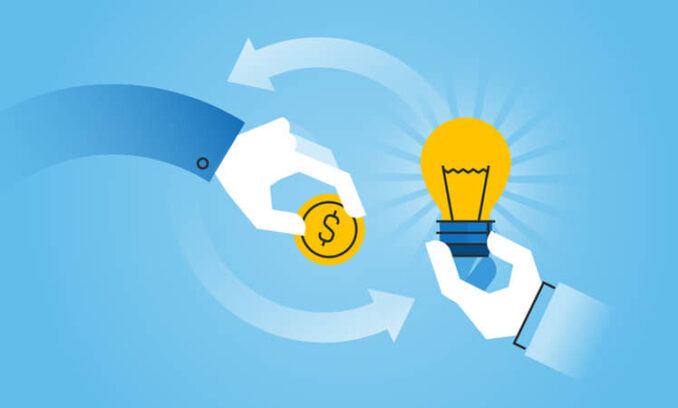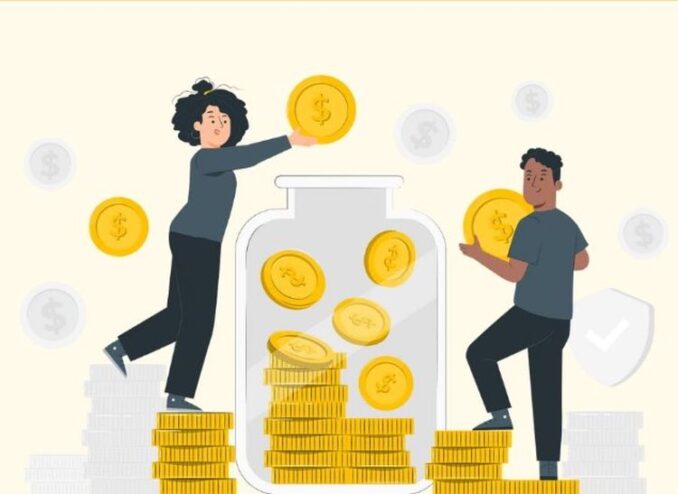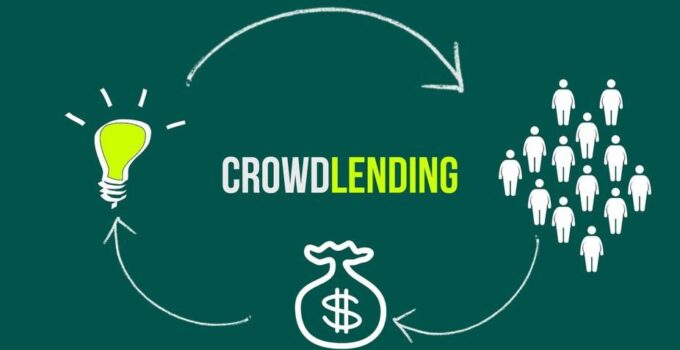In recent years, the financial landscape has witnessed the emergence of innovative funding models that challenge traditional banking systems. Crowdlending, also known as peer-to-peer or marketplace lending, has gained significant traction as a viable alternative for borrowers and investors. This article aims to understand what crowdlending is and how it works comprehensively.
What is Crowdlending?
Crowdlending can be described as borrowing and lending money directly between individuals or businesses through online platforms. It eliminates the need for intermediaries like banks, allowing borrowers and lenders to connect directly. Crowdlending platforms act as facilitators, matching borrowers seeking financing with lenders looking to invest their funds.
How does Crowdlending work?

Source: pinterest.com
Crowdlending, or peer-to-peer or marketplace lending, is a method of borrowing and lending money directly between individuals or businesses through online platforms. It involves the following steps:
Borrowers’ Perspective
From the borrowers’ perspective, crowdlending offers a straightforward and accessible avenue to secure financing. Here is a breakdown of the process from the borrowers’ viewpoint:
- Application: Borrowers apply for loans on crowdlending platforms by providing necessary financial information, the purpose of the loan, and creditworthiness assessment.
- Credit Evaluation: The platform assesses the borrower’s creditworthiness, employing various risk assessment models and techniques to determine the borrower’s eligibility.
- Loan Listing: Once approved, the loan is listed on the platform, where potential lenders can evaluate the borrower’s profile, loan details, and interest rates.
- Funding: Lenders review loan listings and decide to fund specific loans based on their risk appetite and return expectations. Multiple lenders can collectively fund a single loan.
- Repayment: Borrowers repay the loan, including principal and interest, according to a predetermined repayment schedule, which is facilitated by the platform.
Lenders’ Perspective
From the lenders’ perspective, crowdlending provides an opportunity to invest their funds and earn returns by funding loans to borrowers. Here is an explanation of the process from the lenders’ viewpoint:
- Registration: Lenders register on the crowdlending platform, providing necessary identification and financial information.
- Loan Selection: Lenders can browse through available loan listings and choose to invest in loans that align with their risk preferences and investment goals.
- Diversification: Lenders often diversify their investments by spreading their funds across multiple loans, reducing the risk of individual defaults.
- Returns: Lenders receive interest payments and repayments from borrowers, generating a return on their investment. The platform may deduct a fee for facilitating the transactions.
Benefits of Crowdlending

Source: freepik.com
Crowdlending offers several benefits for both borrowers and lenders. Here are some key advantages:
- Accessibility: Crowdlending opens up financing opportunities for individuals and businesses who may struggle to secure loans from traditional sources due to stringent criteria or lack of collateral.
- Competitive Interest Rates: Due to the absence of intermediaries, crowdlending can offer competitive interest rates for borrowers compared to traditional lending channels.
- Diversification and Investment Opportunities: Lenders can diversify their investment portfolios by allocating funds to various loans, reducing risk, and increasing potential returns.
- Streamlined Process: Crowdlending platforms leverage technology to automate the loan application, credit assessment, and repayment processes, providing a seamless user experience for both borrowers and lenders.
Alternative Income Generation: Auto Trading Apps
In addition to crowdlending, another alternative for generating income is through auto trading apps like the Immediate Edge. Auto trading apps utilize sophisticated algorithms and machine learning to automate trading activities in financial markets. These apps enable users to trade various assets, including stocks, cryptocurrencies, commodities, and foreign exchange, without requiring in-depth market knowledge or extensive trading experience.
Auto trading apps typically function as follows

Source: pinterest.com
Auto trading apps provide users with a streamlined process for trading activities and generating income from financial markets. Here is a breakdown of how these apps typically function:
- Account Setup: Users create an account on the auto trading app platform, providing necessary identification and financial information.
- Strategy Selection: Users choose from a range of pre-defined trading strategies or create a customized system based on risk tolerance and investment objectives.
- Automated Trading: Once the strategy is selected, the app’s algorithm executes trades automatically, monitoring market conditions, analyzing data, and placing buy or sell orders accordingly.
- Risk Management: Auto trading apps often include risk management features such as stop-loss orders, which automatically close positions to limit potential losses.
Wrapping Up
Crowdlending and auto trading apps represent alternative avenues for individuals seeking to diversify their income or investment strategies. While crowdlending provides a decentralized lending ecosystem connecting borrowers and lenders, auto trading apps offer an automated approach to trading financial assets. Both options offer unique benefits and opportunities, empowering individuals to participate in the financial world outside traditional banking systems. As with any investment or economic activity, individuals must conduct thorough research, assess their risk tolerance, and understand the associated costs and potential returns before engaging in crowdlending or auto trading.





